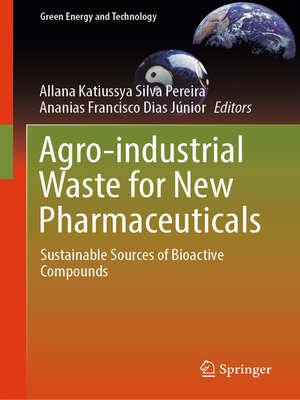Agro-industrial Waste for New Pharmaceuticals
ebook ∣ Sustainable Sources of Bioactive Compounds · Green Energy and Technology
By Allana Katiussya Silva Pereira

Sign up to save your library
With an OverDrive account, you can save your favorite libraries for at-a-glance information about availability. Find out more about OverDrive accounts.
Find this title in Libby, the library reading app by OverDrive.



Search for a digital library with this title
Title found at these libraries:
| Library Name | Distance |
|---|---|
| Loading... |
This book is written to foster discussions on the valorization of agro-industrial waste as a raw material for bioactive compounds that can assist in disease containment, the protection of soil resources, and consequently, human health.
The agro-industry encompasses a broad spectrum of activities focused on transforming raw materials from agriculture, livestock, aquaculture, and forestry. In addition to producing a diverse range of goods, these processes generate substantial amounts of residual biomass from various cultivation and processing systems. In this context, the intensification of climate change and the overexploitation of natural resources have been major drivers of emerging infectious diseases. A recent and impactful example is SARS-CoV-2, which escalated into a global pandemic with severe mortality rates. Additionally, Latin America has experienced a sharp rise in dengue cases, prompting the Pan American Health Organization to issue an epidemiological alert due to the increasing incidence of arboviruses across the region.
Given the need to explore possibilities for valuing and utilizing agro-industrial waste, this book presents the potential of this material in the context of human health. The authors present a comprehensive review of recent research on pyroligneous liquid as a rich source of bioactive compounds, alongside the use of biochar and bone char in water treatment and herbicide immobilization in soil. Additionally, the book provides an in-depth analysis of methodologies for extracting bioactive compounds from “açaí” (Euterpe oleracea and E. precatoria) waste, highlighting its potential for high-value applications. In this way, the book highlights the challenges and opportunities to transform these materials into beneficial resources, both for the environment and for society, contributing to the advancement of public health and environmental conservation in the context of climate change.







